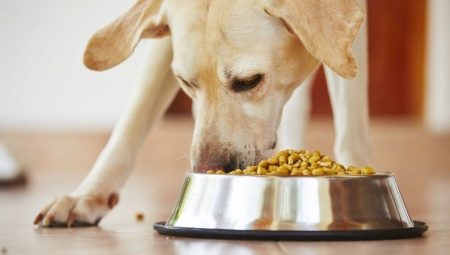Labradors are beautiful and hardy dogs with good health. However, like other thoroughbred animals, Labradors have a predisposition to certain diseases. A huge role in the issue of disease prevention in dogs of this breed is played by a well-composed diet. It is worth considering how it is necessary to feed Labradors, what ration should be for adult dogs, and which - for puppies, what can and cannot feed Labradors.
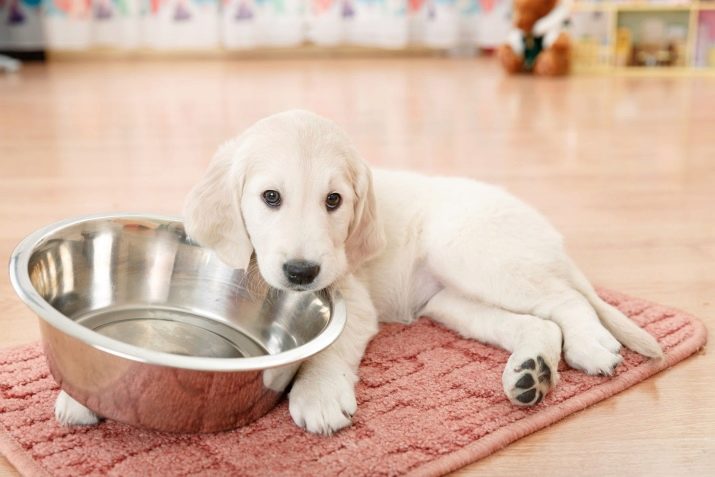
Feeding puppies up to a year
From the moment of birth to the age of 4 weeks, Labrador puppies must be fed breast milk. It contains all the nutrients and nutrients necessary for babies, which are necessary for the full growth and development of puppies. If for some reason the puppies cannot receive breast milk (for example, if they were weaned early from the mother or the bitch lost lactation after giving birth), then you can feed the kids using special mixtures. For artificial feeding, it is best to use products of well-known brands. In modern pet stores you can find dry balanced mixes and cereals for puppies aged 0+ from such well-known manufacturers as: Royal Canin, Hartz, Happy Dog, Bosch, Beaphar, Canina Welpenbrei.
Artificial feeding of puppies with mixtures is carried out in accordance with the recommendations of manufacturing companies.
At the age of 3-4 weeks, the teeth begin to appear in babies, which allows you to introduce the first complementary foods into their diet. Experienced dog breeders recommend using “bracken” - scraped meat (only lean veal or beef) as complementary foods. From the age of 4 weeks, it is allowed to introduce another type of complementary foods in the form of low-fat cottage cheese into the puppies ’diet.When the digestive system of babies adapts to proteins of animal origin, sources of vegetable protein are allowed in their menu.
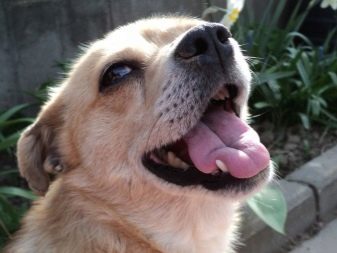
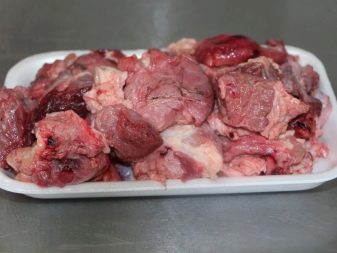
After the puppies are 1–2 months old, the frequency of their feeding should be from 5 to 7 times a day. The recommended daily amount of food can vary from 300 to 350 grams. At the age of 2 months, puppies begin to gradually lose interest in mother's milk. During this period, you should slightly diversify their menu. In the diet of two-month-old babies, it is recommended to introduce lean types of meat (poultry, rabbit meat, veal), cereals (buckwheat, rice, oatmeal).
When Labrador puppies are 3 months old, white sea fish is allowed to gradually enter their diet. Most preferred in this case are fish species such as halibut, hake, pollock. Enter the fish in the menu of three-month-old babies must be extremely careful, in very small quantities. At the first sign of an allergy or stool disorder, a problematic product should be permanently excluded from the puppy's diet. The diet of three- and four-month-old puppies provides for 4–5 meals per day. The recommended daily amount of food is about 400 grams.
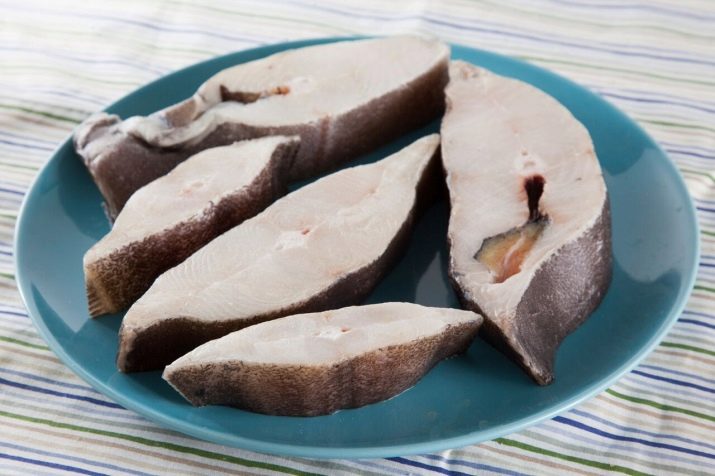
From the age of five months to a year, small labradors should be fed three times a day. Each puppy should consume about 500 grams of food per day, divided into breakfast, lunch and dinner. The daily menu of young dogs should include such basic products as:
- lean meats;
- dairy products (cottage cheese, kefir, fermented baked milk, yogurt);
- boiled vegetables;
- porridge (preferably buckwheat and rice).
In addition, the owner of the growing Labradors must take into account that as they grow older the puppies will need additional sources of micro and macro elements. They use fish oil, bone meal, brewer's yeast, crushed egg shells.
When the puppies are 6 months old, their diet should be adjusted so that young dogs can grow stronger and actively develop, but do not gain excess body weight.
To do this, reduce the amount of carbohydrate sources (cereals) in the daily menu and increase the amount of protein foods and fiber-containing foods (vegetables). Twice a week it is allowed to treat the dog with 1 boiled chicken egg and a portion of cottage cheese. It is recommended to observe such a menu until the puppies are 1–1.5 years old.
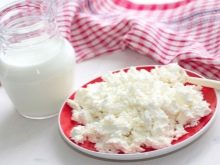
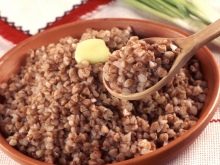

When Labradors turn one year old, they must be transferred to the diet of adult animals. This includes a double meal per day (morning and evening) and an increase in the volume of daily servings. At the same time, when adjusting the diet, it is important to take into account the individual characteristics of dogs, their health, the amount of daily physical activity, physique and level of development.
How to feed adult dogs?
A characteristic feature of all Labradors is their excellent appetite and the resulting tendency to gluttony. If you constantly pamper your pet with high-calorie goodies, feed abundantly and do not pay due attention to his physical activities, in a very short time the dog will become overweight. Then, with an increase in body weight, accompanying problems can become associated with obesity of the animal - diseases of the joints and spine, impaired functioning of the body's functional systems (endocrine, cardiovascular, respiratory, urinary). A labrador should receive about 1–1.3 kilograms of food daily, divided into morning and evening meals. At the same time, the proportional ratio between sources of proteins, complex carbohydrates and fats (plant and animal) should be 50: 30: 20, respectively.
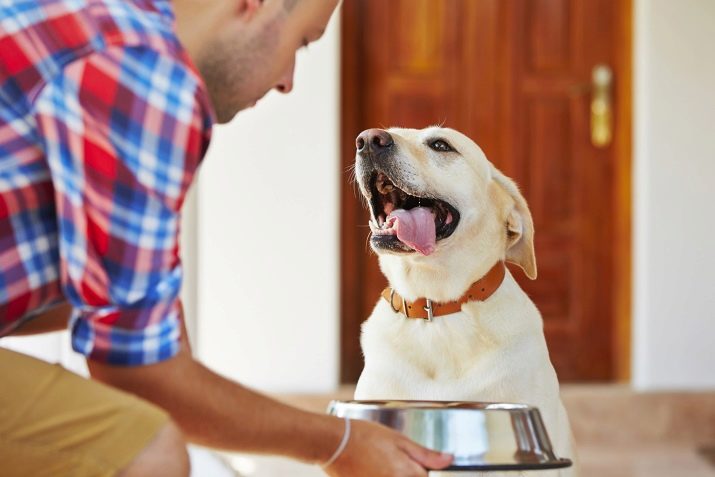
Every day, the dog should consume about 450 grams of meat, 300 grams of porridge and 200 grams of vegetables. Preferably, the animal’s menu contains not only meat, but also other sources of protein, such as cottage cheese or fish.And also keep in mind that labradors need additional sources of micro and macro elements. As them, you can use various dietary supplements, vitamin and mineral complexes for large dogs. Pets of mature and old age should be regularly given chondroprotectors - veterinary drugs that prevent diseases of the joints and musculoskeletal system (Gialutidin, Straight Plus).
Once every 5-7 days, it is allowed to give the dog low-fat sea fish instead of meat. It is fed in boiled form, cut into pieces and peeled from bones. The sizes of daily servings should be carefully monitored and modified (reduce or increase) taking into account physical activity and animal activity. If the dog does not move much, rarely walks and spends most of the time alone, the portion sizes are slightly cut. For example, they do this in winter, when the Labrador does not walk most of the time in the day, but sits at home.


The adult labrador should be fed at the same time.
It is undesirable to break the usual feeding regimen. Visually, the animal should not look fat or skinny. A healthy dog has a strong and dense physique, its coat shines and shines. Dull and falling out hair indicates that the animal does not receive vitamins and minerals.
In planning a dog’s diet, the pet’s health status also matters. Weakened, sick and pregnant dogs are fed more often and more, observing in the menu a balance between sources of proteins, carbohydrates and fats. Additionally, such individuals are also given special supplements to promote health. For more information on these supplements, contact your veterinarian.
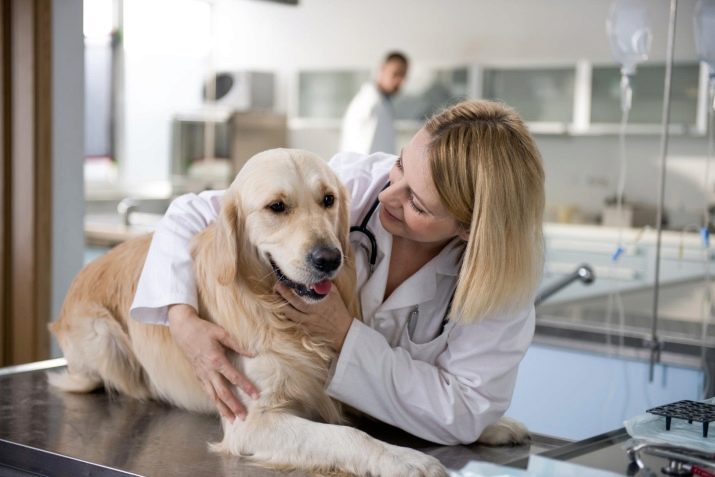
Choose a diet
For dogs of all breeds, 3 main feeding schemes are provided.
- Natural food ("natural"). Natural feed includes a list of permitted foods that are boiled, steamed or served raw. The ration and menu of the animal in this case are planned and made up by the owner. Many dog breeders adhere to this particular type, although such feeding is considered quite complicated and time-consuming.
- Dry and wet industrial feed. Dry and wet prepared feeds are industrial products and are sold in all pet stores. Such foods are balanced, containing the entire spectrum of vitamins and minerals needed by the dog. In the modern sale you can find ready-made feeds for dogs of different breeds and ages, different constitution, health status and other individual characteristics.
- Mixed type. Mixed or combined type of food involves feeding the dog with prepared feeds with periodic introduction of natural products in the menu. This type of food is usually followed by professional breeders, dog clubs and nurseries.
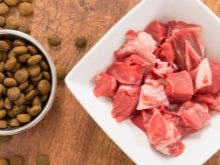
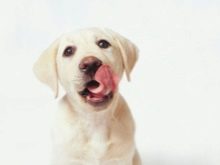
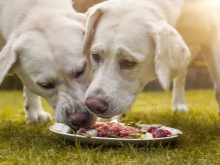
Natural products
When planning to feed a dog with natural food, the owner must know exactly what foods are acceptable in the diet. Departure from this list is strongly discouraged.
The following natural foods are allowed in Labrador diets:
- lean meat (veal, beef, low-fat pork, chicken, rabbit, turkey, low-fat mutton, horse meat);
- offal (lungs, scar, liver, kidneys, heart, tongue);
- chicken and quail eggs;
- vegetables (carrots, cucumbers, turnips, zucchini, cauliflower, potatoes);
- fruits (apples, pears, bananas);
- dairy products (cottage cheese, fermented baked milk, kefir, sour cream, natural yogurt without additives and dyes);
- vegetable types of oils (sunflower, linseed, olive);
- sea white fish;
- cereals (buckwheat, oats, rice).
When planning a dog’s menu of natural products, the owner of the animal must control the right balance between sources of fats, carbohydrates and proteins. The basic element of a dog’s nutrition should be animal protein sources. Feed your pet should only freshly prepared food.It is allowed to store cooked food in the refrigerator for two days. Labrador should not be given too cold or too hot food.

Finished feed
This type of food is considered the least labor-intensive, allowing you to save time on cooking. Very often, the diet of labradors contained in nurseries is based on wet and dry food. In modern pet stores you can find different types of food: for puppies, adults, elderly, weakened and sick dogs, for allergic dogs, for pregnant and lactating bitches.
The main categories of finished feed:
- "Economy" - the cheapest and least valuable type of feed;
- “Premium” - a relatively expensive type of feed with a relatively high nutritional value;
- “Premium plus” - an expensive type of feed with high nutritional value;
- “Super premium” is the most expensive type of feed containing a maximum of nutrients, micro and macro elements.
For feeding labradors, it is best to use feeds from the categories "premium plus" and "super premium".
They have high energy value, balanced and enriched with vitamins and minerals.
The greatest popularity among dog breeders was prepared feed from such major brands as Royal Canin, Happy Dog, Bosch. When feeding dogs with prepared dry and wet feeds, one should take into account the norms recommended by the manufacturers and ensure that the animals always have access to fresh and clean water.
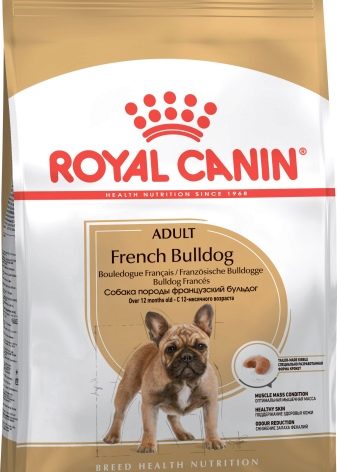
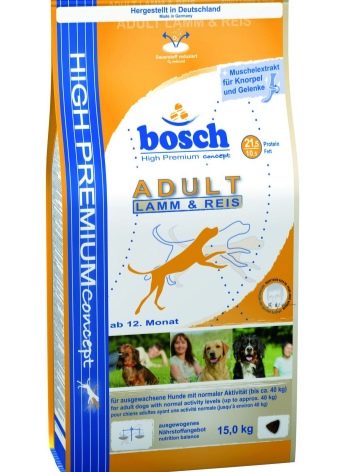
If the animal needs to be fed (for example, after an illness), it is necessary to choose the type of wet or dry food and increase the volume of servings.
It is not forbidden when caring for an exhausted animal to increase the frequency of meals.
Mixed type of food
With a mixed type of food, the basis of the dog’s diet can be both natural products and dry food. Adhering to a mixed type of food, you should feed the dog "natural" in the morning, and in the evening - ready-made food (or vice versa). The sequence of meals of natural food and finished food is determined by the owner of the animal. It is not recommended to mix natural products and prepared feeds in one meal. In this case, the balance of proteins, fats and carbohydrates is disturbed, and the calorie content of the portion increases greatly.

What should not be given?
Each owner of a Labrador when planning a dog's diet should take into account the range of products prohibited on the menu. It is impossible to neglect this list and violate the recommendations of experienced dog breeders. So, some products from this list can cause severe allergic reactions, while others - digestive and intestinal disorders. Some products (such as, for example, bones) can not only cause severe disruption of the intestines, but also cause dangerous internal injuries up to fatal bleeding.
The list of prohibited products includes the following:
- tubular bones, bone fragments;
- fatty meat, fat;
- lake and river fish;
- semi-finished meat products;
- canned food, sausages, sausages;
- kebab;
- milk (may cause an attack of diarrhea)
- any sweets, including ice cream and chocolate;
- legumes (provoke bloating and flatulence);
- white bread, pastries, buns;
- beet.
It is strictly forbidden to feed a dog with spoiled and expired products.
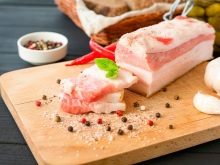
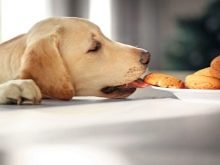
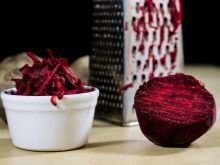
This can become not only a cause of severe intestinal upset, but also toxic poisoning. Experienced owners of Labradors categorically do not recommend feeding the dog the rest of the food from the home table. This condition is due to the fact that in many dishes there are spices and seasonings, which are also not allowed in the animal’s menu.
Additional nutrition tips for the Labrador can be found in the video below.
